9 leading marketing channels and how to use them
May 6th, 2022

Contents
What is a marketing channel?
Content marketing
Video marketing
Social media
Search engine optimization
Search engine marketing
Mobile marketing
Email marketing
Display ads
Affiliate marketing
How to choose the best marketing channels
The Internet has changed the usual ways of doing business, marketing and selling products and services. People are paying less attention to print ads, billboards, and television commercials. Nowadays, consumers prefer receiving information and searching for products primarily through online channels like social networks.
Today if your company does not have a website or a social media profile, you face a considerable risk of being left behind. However, a solid online presence is a guarantee that your business will succeed and get ahead of the competition. In an oversaturated online marketplace, a digital marketing strategy that integrates several channels will help you stand out.
What is a marketing channel?
Marketing channel is a chain of intermediaries that allows companies to deliver information about products and connect with consumers interested in making a purchase. A marketing channel includes people, businesses, and operations required to transfer ownership of goods from the producer to the customers. With the help of marketing channels, business owners can disseminate marketing messages to the end-users and sell products to the target audience. In a nutshell, marketing channels are tools and platforms that businesses employ to engage with consumers.
Marketers can use a variety of channels to manage sales and build a working strategy for the company. Each channel has a distinct purpose: developing a strong brand identity, marketing new products, communicating relevant content, and providing post-purchase assistance. Companies usually use a mix of several channels to increase customer engagement and achieve critical business objectives.
There are three main types of marketing channels: communication, distribution, and service channels. The primary purpose of communication channels is to convey a message to the audience. The content of the company newsletter is an example of a communication marketing channel since it contains a particular message for the customers. Distribution channels are methods a company uses to deliver its products to consumers. Packaging used for the transportation of goods is an example of a distribution marketing channel. Finally, service marketing channels refer to mediums involved in facilitating transactions, such as banks, insurance companies, warehouses, and transport operators.

We will pay special attention to communication channels and consider the most effective digital marketing platforms and their key characteristics. We will also provide tips on using these channels to reach your business goals.
Content marketing
You can use content marketing for various purposes: promoting your products and services, educating the audience, building a robust online presence, increasing website traffic, generating leads, or improving brand visibility. Content marketing is the best way to shift the focus from direct advertising to demonstrating your value through useful and valuable information. There are many different types of content marketing: blogs, infographics, videos, social media posts, ebooks, case studies, and whitepapers. Each content type is intended for a specific stage of a conversion funnel and a particular audience.
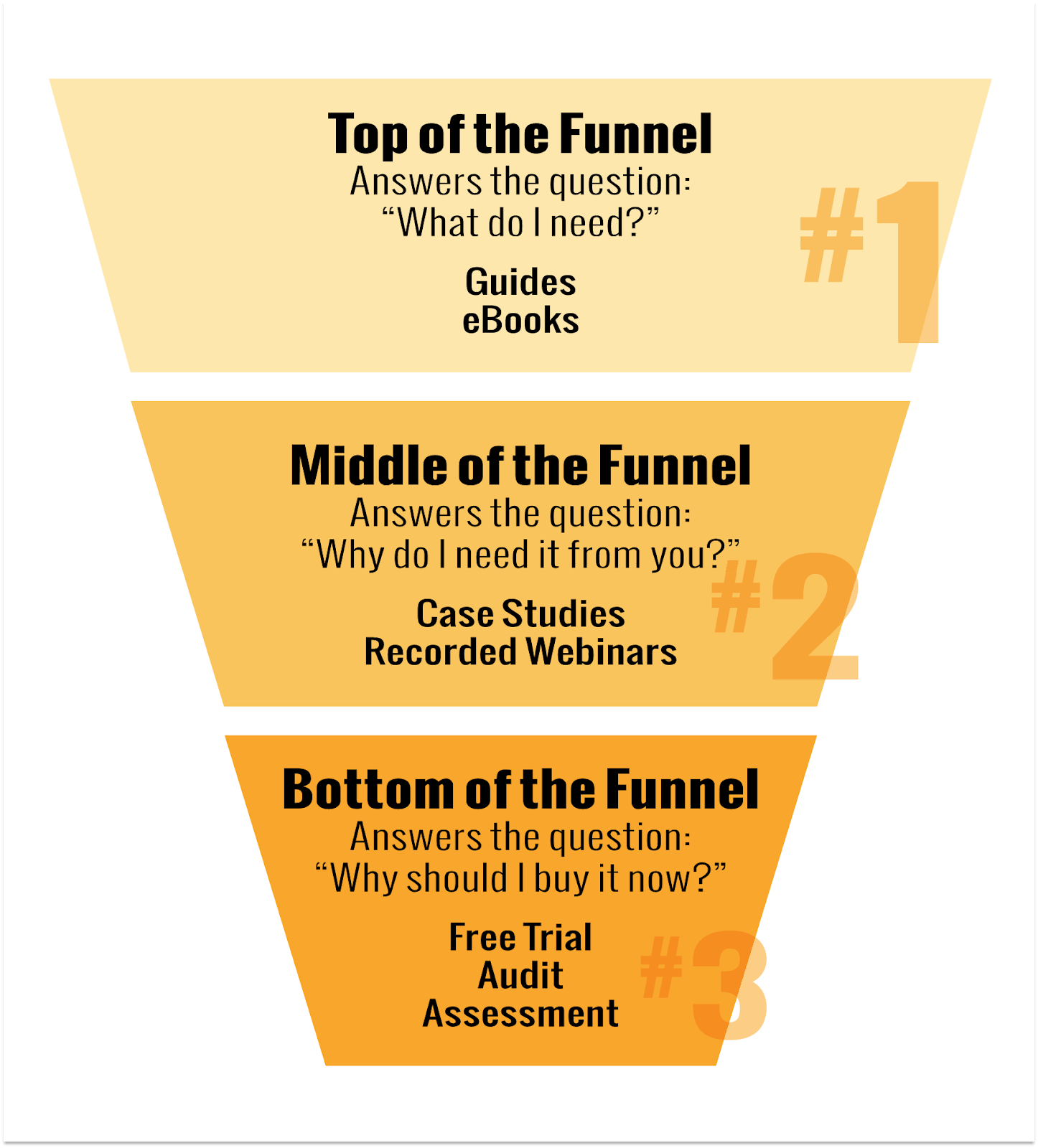
Great content helps the company acquire the reputation of the authority in a certain area. It draws the attention of subscribers and industry experts, motivates people to share articles, and establishes credibility. In addition, content marketing aims to drive consumers to take the desired action, such as moving to the next stage of the sales funnel or making a purchase. Thus, content marketing provides the information that gives solutions to consumers’ pain points, intending to influence customers’ buying decisions. Moreover, you can easily combine content marketing with other digital marketing channels. For example, you can optimize the website articles for search engines or create highly engaging posts and videos for Instagram.
How to use it
- Study the target audience’s needs to give appropriate answers to their questions. Use various ways to present information, such as videos, images, and text.
- Produce consistent and relevant content to increase organic traffic and generate leads. You will get unpaid traffic that comes from people who visit your website by finding it through search engines.
- Promote the content via social media networks and personalized email marketing to attract visitors to your website or blog.
Video marketing
Cisco reports that video will make up more than 82% of global Internet traffic in 2022, in contrast to 73% in 2017. According to another research, in 2020, adults in the United States spent more than an hour and a half watching videos on devices. Therefore, we can assume that the use of video content will have a significant impact on the success of the overall marketing strategy. Once you add a video to your webpage, you will dramatically improve the chances of your website ranking higher on Google. Moreover, you will have the opportunity to increase conversion rates by incorporating videos into the landing pages.
You can create videos to complement text passages. For example, combine a behind-the-scenes video that explains manufacturing processes with a blog post describing the key features and benefits of the product. Use different video formats to build your digital brand, educate viewers and engage website visitors since video content arouses greater interest than plain text. Consider including webinars, interviews, presentations, testimonials, demos, reviews, tutorials, vlogs, and explainers in your video marketing strategy.
How to use it
- To reach a wider audience and improve your Google rankings, distribute the videos on YouTube and promote them on social media.
- Use storytelling to establish consistency and provide a coherent customer experience taking into account every stage of the buyer’s journey.
- Target each customer with a specific video format. For example, a case study is the most suitable content type for customers at the consideration stage of the funnel.
Social media
Nowadays, people often use social media to find products and services. The most notable advantage of social media marketing is its accessibility and affordability, even for small businesses. Social media networks allow you to establish a more personal connection with your audience and maintain a sincere relationship with existing and potential customers. With social media, you can develop your brand personality by using humor and irony, giving an opinion on current events, or creating shareable content.
Social media is a perfect channel for two-way communication between your company and customers. People can leave comments and interact with the content. Customers can send direct messages to your company, ask questions, leave testimonials or offer suggestions about the products. In addition, you can use social media to conduct market research, better understand the target audience and provide solutions tailored to their needs and requirements.
How to use it
- Create and distribute engaging content, such as questions, surveys and polls, visual infographics, videos, contests, and giveaways. Reply to comments and pay attention to subscribers’ opinions and feedback.
- Incorporate holidays, daily, weekly or monthly series of publications on a predetermined topic.
- Encourage people to share user-generated content and repost their mentions to expand your social media reach.
Search engine optimization
SEO focuses on getting organic traffic using excellent informational content, page optimization, keyword research and link building. This marketing channel attracts a loyal audience interested in a brand and its products. For instance, people who found your website in search results when looking for solutions to their problems are more likely to convert than those who visited your webpage after clicking the ad.
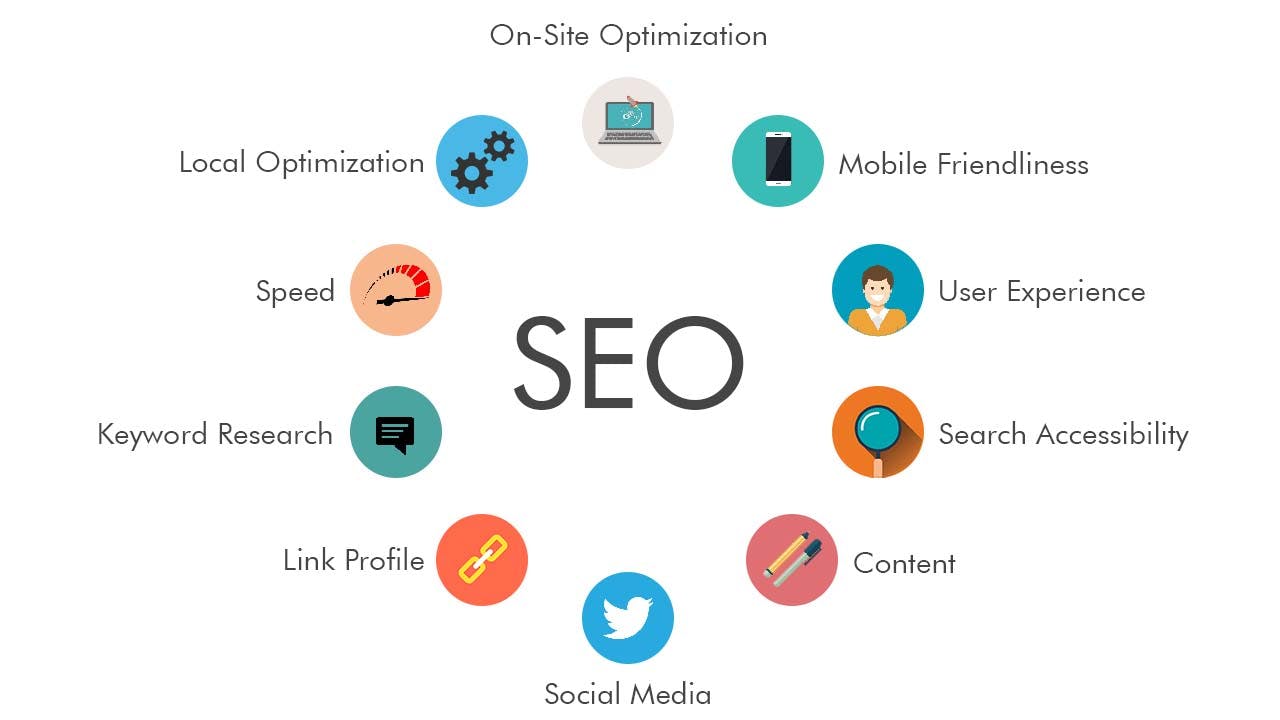
The success of your marketing efforts will greatly depend on the SERP position. On average, CTR grows by 30.8% when a website moves up one position in Google search results. However, in some cases, moving from one position to another will not make a huge difference. For example, moving from 9th to 8th rate in search results will bring a 5% increase in clicks. In contrast, if a website changes its position from 6th to 5th, this will result in 53.2% more clicks.
How to use it
- Focus on essential Google ranking factors: domain authority, mobile usability, on-page optimization, backlinks, high-quality content, and organic click-through rate.
- Produce authoritative and optimized content regularly to get on top of the search results. Update the content regularly to meet the needs of the audience.
- Once you create a content-rich and trustworthy website, you will be able to attract links from other pages, which improves your SEO results. Use descriptive links that include the name of the destination within your website articles.
Search engine marketing
Search engine marketing or paid search aims to increase website traffic from search engines by using paid advertisements. This channel allows digital marketers to place advertisements on SERPs above organic results. In the case of paid search, you have to pay each time a user clicks on an ad, unlike organic traffic, which is generated for free. To place the advertisement, you need to bid on keywords that you think people will use when looking for a similar product or service. Furthermore, you can target specific demographic groups of consumers.
The most popular SEM services are Google Adwords, Bing Ads, and Google Shopping Ads. Google Ads analyzes six crucial aspects to determine the position of your ad. These factors include your bid or the amount of money you are willing to pay for the click, quality of ads and landing pages, user’s search context, the impact of ad styles and extensions, and many more.
How to use it
- Target customers by taking into consideration demographics, pain points, and buying behavior.
- You can guide visitors who click on your ads to website pages that contain contact sections. As a result, you may gather users’ data and use it to engage people in your further marketing activities.
- The typical cost of a click is between $1 and $2, but it depends on your industry and selected keywords. Also, note that highly competitive areas or keywords may cost up to $50 or more per click.
Mobile marketing
Mobile users spend about 90% of their time using applications and playing games. For that reason, mobile marketing is becoming one of the most profitable channels for businesses. Mobile marketing employs a wide range of strategies, such as geo-targeting and collecting customer data to recommend appropriate products and services more accurately. You can promote your offers and send instant updates by delivering the information to your customers in real-time.
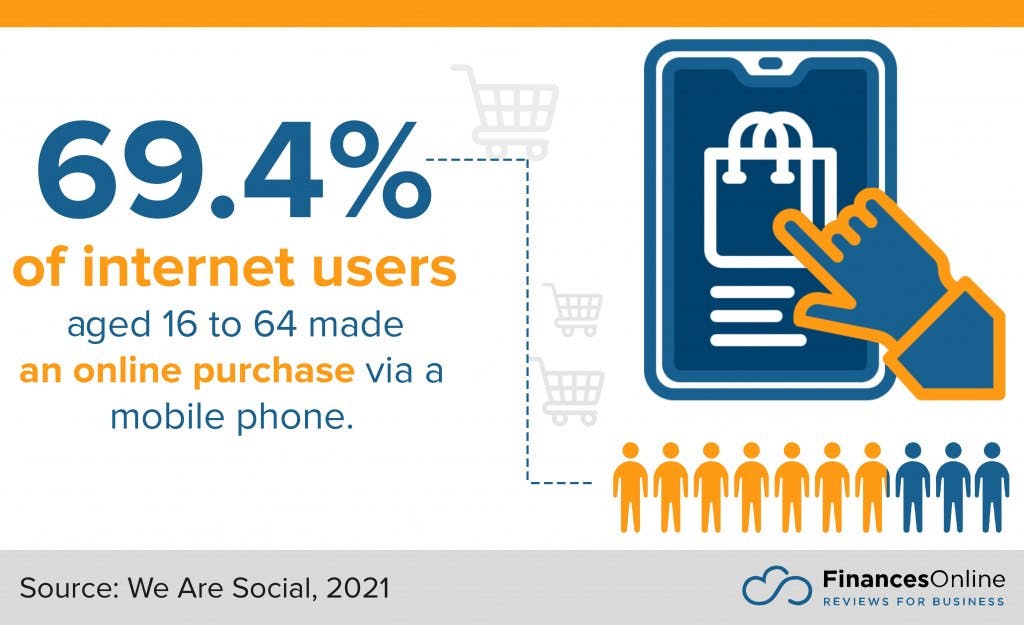
Instant messaging is one of the mobile marketing strategies that helps businesses connect with consumers on a more personal level. It is slightly different from other online marketing strategies. This tactic demands a more personalized approach and usage of phrases that encourage taking action, such as “Buy now” or “Learn more”. Finally, the text should be brief and precise since users often ignore long messages.
How to use it
- Make sure your website or application is mobile-friendly and has a responsive design. It implies compressed pictures, fast loading speed, large buttons and fonts, a navigation bar, and other crucial features. You can take a look at our dedicated article on website audit for more information.
- Simplify the routine procedures by adding QR codes to payment pages. With QR codes, people would be able to reach your website or save your contact details in a matter of minutes.
- Segment your target audience by dividing people into groups or creating lists to send valuable instant messages to the proper recipients.
Email marketing
Most people use email every day or even several times a day, making this channel an excellent addition to your marketing mix. Email marketing is an affordable tool for every business, even the small ones. It allows for creating personalized content, segmenting customers into lists, monitoring email performance, and conducting tests to increase click-through rates. In addition to that, this channel is suitable for the customers at every stage of the sales funnel. With email marketing, you can nurture leads, build relationships with current customers, increase brand awareness and sell products directly to consumers.
Email marketing provides numerous opportunities depending on the types of emails you can send to customers. These may include brand newsletters with regular updates about the company or emails dedicated to launching a new product or service, opening a store, or announcing the event. The other types of messages used within an email marketing strategy are confirmation letters, notifications, and thank-you notes.
How to use it
- Create engaging email subjects with the indication of the specific time frame. It will motivate the subscribers to benefit from your promotional offers before they expire.
- Adjust your email marketing campaigns to users’ location, demographics, stage of the purchase funnel, and other personal details.
- Encourage people to leave feedback, send surveys and polls to measure client satisfaction, and provide customer support via email.
Display ads
Display ads usually look like banners containing images, videos, and music. They communicate your marketing message on social media, websites, and email platforms. The main difference between display ads and paid search ads is the absence of keywords you need to bid on. What is more, display ads usually have a cheaper cost-per-click as there is more advertising space available for the banners than for search engine results pages.
When placing display ads, marketers should make sure that the visitors of the host website match the ad’s target audience. The greatest advantage of display ads is their retargeting capability. If a user visits your website but does not convert, you can retarget them with a display ad later by using cookies.
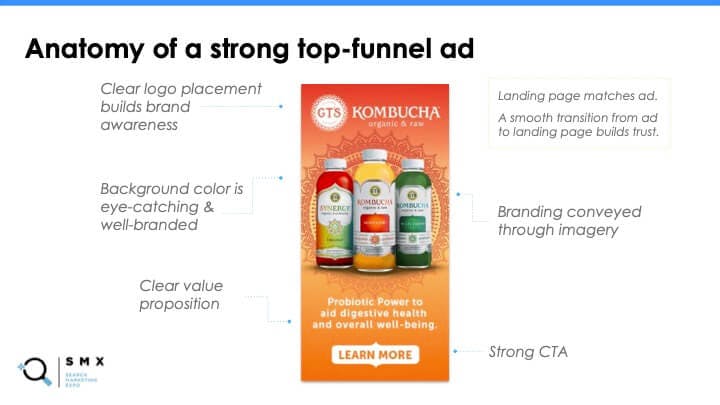
How to use it
- Make emphasis on your unique selling proposition. Highlight the product’s quality, value, or unique characteristics.
- Choose call-to-action phrases that focus on customer needs rather than using direct and pushy CTAs.
- Create responsive display advertisements based on your text ads. Try different color schemes, content designs, and display types, include optimized images and use clear headlines to make ads display perfectly on different devices.
Affiliate marketing
Affiliate marketing is an advertising strategy in which a company pays bloggers or influencers to promote its products or services and increase sales. First, a blogger offers a discount or shares a link to your website with the followers. Then, once a user enters the discount code or clicks on the link, a company provides compensation for sale or website traffic. In most cases, companies pay affiliates per sale rather than by clicks or interactions.
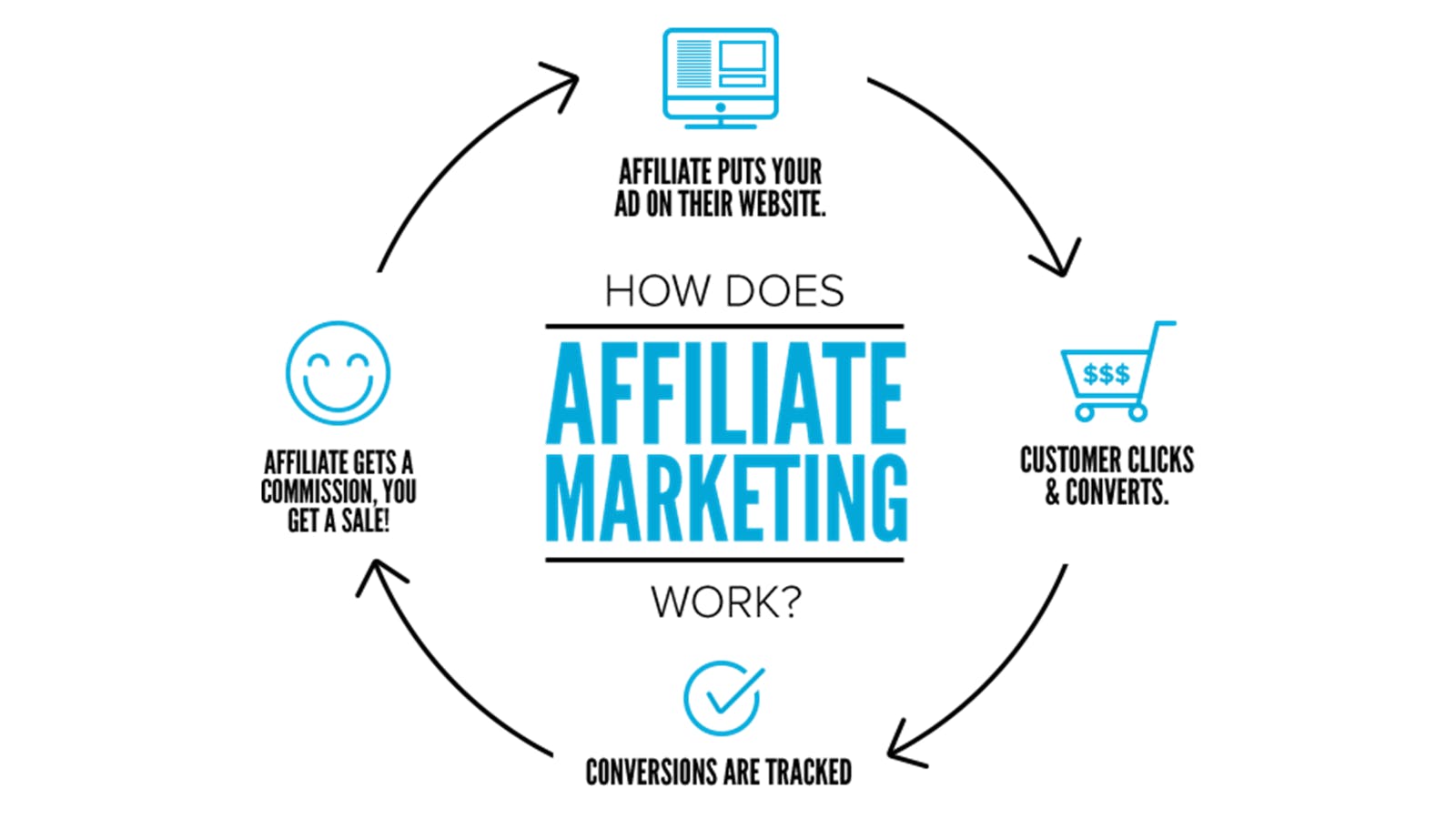
This marketing channel will be a great choice if your objective is to raise brand awareness and increase your reach on social media. Affiliate marketing is a form of “word-of-mouth” marketing that is based on personal recommendations and is considered one of the most fruitful advertising methods. People often trust the advice of bloggers and influencers, so you have an excellent opportunity to gain access to their audience.
How to use it
- Choose the affiliate considering your budget, target market, and niche. If you are working for a small company, focus on micro-influencers with a maximum of 100,000 subscribers as they are more affordable.
- You can either choose the existing affiliate program on Amazon Associates network or create your own.
- Involve influencers with an engaged audience that matches your customers’ interests rather than focusing on the number of subscribers.
How to choose the best marketing channels
Once you have learned about common marketing channels and the ways to use them to increase brand awareness, drive traffic and sales, generate leads, and achieve the other objectives, it is time to choose the most suitable ones for your business.
Define goals. Each marketing channel is better suited for a specific purpose, so this stage should not be overlooked. You can set the objectives according to the SMART model. Your marketing goal should be specific, measurable, attainable, relevant, and timely.
Understand your audience. Then, you need to study the target audience to better understand how to allocate budget and resources for the marketing campaigns. Conduct qualitative research to identify at least three marketing channels that your target audience prefers to use more frequently than others. Analyze how much time your customers spend online, the pages they follow, and the topics and types of content they are interested in. Study the channels used by your main competitors.
Budget for long-term. Some digital channels are more expensive compared to others. Calculate return on investment. A comprehensive content marketing plan that incorporates weekly blogging, publishing ebooks, and search engine optimization may outperform using single networks like YouTube or Instagram.
Plan and run a marketing campaign. Once you have selected the perfect mix of channels, you should determine how many posts, advertisements, or pieces of content you need to launch the campaign. Create a communication plan with all required deliverables and establish deadlines for each content creation phase: writing, designing, editing, and promoting. Then assign responsibilities to team members and run the campaign. Make sure that your messaging is consistent across all channels.
Analyze the results and repeat. To achieve success, you need to perform regular tests and constantly update and optimize your marketing campaigns. First, analyze the results with insights tools. If you are not getting the response you expected, change tactics and try again. Repeat until the product-market fit is achieved. Finally, you will have a clear idea of the marketing channels that are most effective for your company.
Different marketing channels bring variable results depending on marketing objectives, audience, and budget. The solutions chosen by the other brands will not necessarily work for your company. You need to try various channels and methods to find several ones to create a perfect marketing mix.
